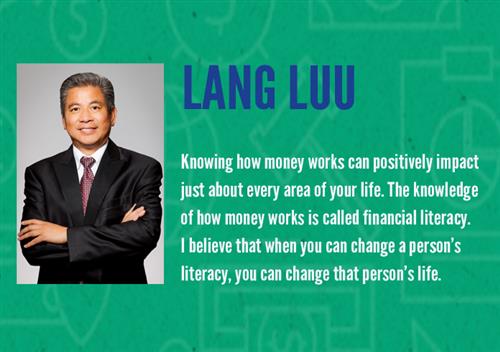This introduction was written by one of our volunteers, Dr. Gwen Gonzalez. Her profile could be viewed at this link https://believeinbelize.org/SitePage/advisors/gwen-nunez-gonzalez.
The loss of indigenous languages and cultural practices have ignited interest in the importance of culture and led organizations to implement programs to ensure cultural survival because its extinction means loss of their way of life as they know it (Ruiz-Alvarez, 2008; Lopez, 2009). Cornish (2004), a leading futurist, proposed that the number of languages is expected to reduce from the estimated 6,000 to 3,000 by the end of the 21st Century. The United Nation’s Educational, Scientific and Cultural Organization (UNESCO) reported that globalization has negatively affected the native languages in Colombia (UNESCO, 2004).
UNESCO in its wisdom has proclaimed that 2019 is the Year of Indigenous Languages worldwide. You can visit this link https://en.iyil2019.org/ for further information on the proclamation. It states that:
It is through language that we communicate with the world, define our identity, express our history and culture, learn, defend our human rights and participate in all aspects of society, to name but a few. Through language, people preserve their community’s history, customs and traditions, memory, unique modes of thinking, meaning and expression. They also use it to construct their future.
Language is pivotal in the areas of human rights protection, good governance, peace building, reconciliation, and sustainable development. (UNESCO, 2019)
Belize is blessed with a diverse ethnic population of 408,487 (Statistical Institute of Belize (SIB), 2019). Our official language is English but other languages spoken include the four indigenous languages of Garifuna, Q’eqchi, Yucatec, and Mopan. The census conducted by the SIB in 2010 shows that these four groups make up 13.9%% of the population with the following distribution Garifuna 4.6%, Q’eqchi 5.7%, Yucatec .07%, and Mopan 3.5% (SIB, 2010). The Garinagu make up 2.4% of the total population of Stann Creek District, 4.7% of the population of Toledo District and 4.1% of the Belize District population (SIB, 2010). Only 3.4% of the individuals identified as Garinagu speak the Garifuna Language in the 2010 Data and in 2017 Data shows that 2.9% of the Garinagu cannot speak the Language (Central Intelligence Agency (CIA) World Factbook, 2011/2017). The 2015-2017 SIB Abstract of Stats shows a decline in the Garifuna Population “Garifuna 2015-22,376; 2016-25,132; 2017- 21,160”. This information is alarming, but it shows a decline in people identifying themselves as Garinagu hence the decrease in number of speakers.
In Belize and across the Americas, the survival of native languages is in jeopardy. My Doctoral Dissertation was on Intercultural Bilingual Education, and I had to interview several elders to identify the root cause of the language decline. I found that at Austin High, the first high school in Dangriga Town, the students were fined for speaking Garifuna because it was deemed important to learn and master the English Language (Cayetano, P., personal communication, February 10, 2008). The same experience was shared by the students at the catholic primary school in Seine Bight Village, a Garifuna community, between the 1940s and 1960s. The students were mandated by the Nuns to only speak the Queen’s English at school (Lambey, A., personal communication, February 23, 2008; Lewis, M., personal communication (video)). Cayetano and Cayetano (2005) wrote that one of the factors that contributed to the erosion of the Garifuna language and other aspects of the culture is the “failure of the school system to acknowledge the language and culture in the educational curriculum, even in Garifuna communities” (p. 243). They also disclosed that United Nations Educational, Cultural and Scientific Organization (UNESCO), proclaimed the Garifuna language and culture as a Masterpiece of Oral and Intangible Heritage of Humanity in 2001.
References
Cayetano, E. R. & Cayetano, M. (2005). Garifuna language, dance, and music- A masterpiece of the oral and intangible heritage of humanity. How did it happen? In J. Palacio (Ed.), The Garifuna a nation across borders essays in social anthropology (pp. 230–250). Bengue Viejo del Carmen, Belize: Cubola Productions.
Central Intelligence Agency. (2011). World Factbook. Retrieved from https://www.cia.gov/library/publications/the- world-factbook/geos/bh.html
Cornish, E. (2004). Futuring the exploration of the future. Bethesda, MA: World Future Society.
Lopez, L. E. (2009). Reaching the unreached: indigenous intercultural bilingual education
in Latin America. Retrieved from http://unesdoc.unesco.org/images/0018/001866/186620e.pdf
Ruiz-Alvarez, S. (2008). Preservation strategies of the Garifuna Language in the context of global economy in the village of Corozal in Honduras (Doctoral dissertation, University of Florida). Retrieved from http://romanitas.uprrp.edu/portugues/volumen4/ruiz.html
SIB. (2010). https://sib.org.bz/publications/census-reports
UNESCO. (2004). All different, all unique young people and the UNESCO declaration on cultural diversity. Retrieved from http://www.unesco.org






